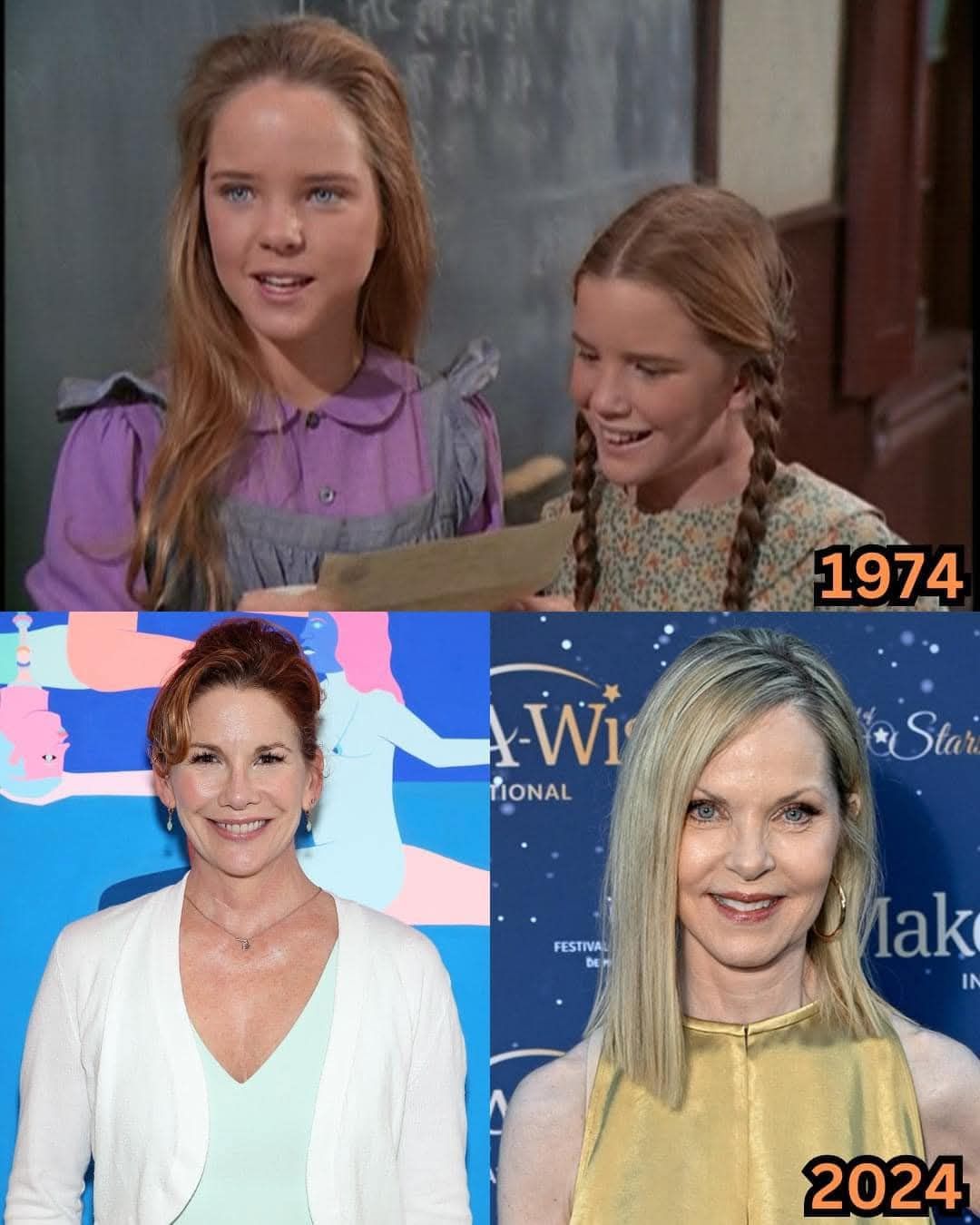“Little House on the Prairie” (1974-1983) featured the remarkable talents of Melissa Gilbert and Melissa Sue Anderson, who portrayed the beloved Ingalls sisters, Laura and Mary. Gilbert, cast at age nine as Laura “Half-Pint” Ingalls, brought an infectious energy and natural charm to her character, perfectly capturing Laura’s spirited nature and determination. Anderson, as the elder sister Mary, portrayed her character with a graceful maturity and quiet strength that created a perfect contrast to Gilbert’s more energetic performance. Their on-screen dynamic as sisters helped anchor the series, with both young actresses demonstrating acting abilities well beyond their years.
One of the most powerful storylines in the series centered on Mary’s journey to blindness, where Melissa Sue Anderson delivered an extraordinarily nuanced performance that earned widespread acclaim. Anderson’s portrayal of Mary’s transition from a sighted person to someone learning to navigate life without vision was both sensitive and powerful. Meanwhile, Melissa Gilbert’s Laura evolved from being merely a mischievous younger sister to becoming Mary’s primary support system, with Gilbert skillfully portraying Laura’s growth into a more responsible and empathetic character through this challenging period.

The contrasting personalities of the sisters, brought to life by these talented young actresses, created much of the series’ emotional depth. Gilbert excelled at showing Laura’s impulsive, sometimes rebellious nature, while Anderson portrayed Mary’s more reserved, studious character with convincing authenticity. Their scenes together demonstrated a natural sisterly chemistry, whether sharing moments of triumph, dealing with sibling rivalry, or supporting each other through hardships. The actresses’ ability to portray this complex relationship helped make the show relatable to viewers of all ages.
Throughout the series’ run, both actresses matured alongside their characters, handling increasingly complex storylines with remarkable skill. Gilbert’s Laura became the heart of the show, with her character’s journey from childhood to young adulthood forming the series’ central narrative. Anderson’s portrayal of Mary provided many of the show’s most dramatic moments, particularly in episodes dealing with her character’s resilience in the face of adversity. Their performances helped elevate “Little House on the Prairie” beyond typical family entertainment, tackling serious themes like disability, prejudice, and personal growth with sensitivity and depth. The genuine warmth and authenticity both actresses brought to their roles contributed significantly to the show’s lasting impact on television history and its continued relevance to modern audiences.
